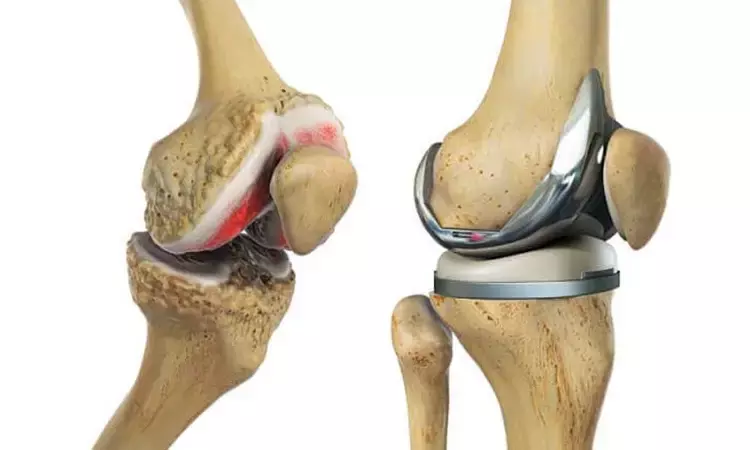- Home
- Medical news & Guidelines
- Anesthesiology
- Cardiology and CTVS
- Critical Care
- Dentistry
- Dermatology
- Diabetes and Endocrinology
- ENT
- Gastroenterology
- Medicine
- Nephrology
- Neurology
- Obstretics-Gynaecology
- Oncology
- Ophthalmology
- Orthopaedics
- Pediatrics-Neonatology
- Psychiatry
- Pulmonology
- Radiology
- Surgery
- Urology
- Laboratory Medicine
- Diet
- Nursing
- Paramedical
- Physiotherapy
- Health news
- Fact Check
- Bone Health Fact Check
- Brain Health Fact Check
- Cancer Related Fact Check
- Child Care Fact Check
- Dental and oral health fact check
- Diabetes and metabolic health fact check
- Diet and Nutrition Fact Check
- Eye and ENT Care Fact Check
- Fitness fact check
- Gut health fact check
- Heart health fact check
- Kidney health fact check
- Medical education fact check
- Men's health fact check
- Respiratory fact check
- Skin and hair care fact check
- Vaccine and Immunization fact check
- Women's health fact check
- AYUSH
- State News
- Andaman and Nicobar Islands
- Andhra Pradesh
- Arunachal Pradesh
- Assam
- Bihar
- Chandigarh
- Chattisgarh
- Dadra and Nagar Haveli
- Daman and Diu
- Delhi
- Goa
- Gujarat
- Haryana
- Himachal Pradesh
- Jammu & Kashmir
- Jharkhand
- Karnataka
- Kerala
- Ladakh
- Lakshadweep
- Madhya Pradesh
- Maharashtra
- Manipur
- Meghalaya
- Mizoram
- Nagaland
- Odisha
- Puducherry
- Punjab
- Rajasthan
- Sikkim
- Tamil Nadu
- Telangana
- Tripura
- Uttar Pradesh
- Uttrakhand
- West Bengal
- Medical Education
- Industry
Onlay round and onlay oval patellar implants show better patient-reported outcomes in TKA

New research has revealed that among the various types of Patellar implants, onlay round and onlay oval patellar implants have shown better patient-reported outcomes, superior bone coverage, and improvements in several intraoperative, radiographic, and scintigraphic outcomes. The trial results were published in The Journal of Bone and Joint Surgery.
Despite much discussion over the role of patellar resurfacing in total knee arthroplasty, it is preferred by most surgeons as it decreases re-operation rates and anterior pain, and an increasing number are adopting resurfacing. As there is very less evidence on the optimal patellar implant design in total knee arthroplasty (TKA), researchers conducted a study to assess clinical, intraoperative, radiographic, and scintigraphic differences between inlay (IN), onlay round (OR), and onlay oval (OO) patellar implants.
A parallel-group, double-blinded, randomized trial was carried out to compare the IN, OR, and OO patellar implants using the same posterior-stabilized TKA prosthesis for each. Out of 121 participants, there were 40 participants in the IN group, 41 in the OR group, and 40 in the OO group. Patient-reported outcomes were prospectively followed for a minimum of 2 years, with survivorship outcomes followed for a mean of 5 years. The primary outcome was the between-group differences in the mean Kujala score change from preoperatively to 2 years postoperatively. The secondary outcomes included differences in other knee-specific and general health outcomes, intraoperative characteristics, radiographic parameters, patellar vascularity, and implant survivorship.
Key findings of the study:
- No significant differences were observed in Kujala score changes between groups at 2 years postoperatively (p = 0.7; Kruskal-Wallis test).
- Greater improvements were exhibited by the OR group in Knee injury and Osteoarthritis Outcome Score (KOOS) Activities of Daily Living when compared with the IN group and in KOOS Quality of Life compared with the OO group.
- Better bone coverage and lower lateral facetectomy rates were exhibited by the OO design group when compared with the IN and OR designs.
- Though the overall value for lateral contact was not significant (p = 0.09; chi-square test), the IN group had more lateral contact compared with the OO group (p = 0.02; Fisher exact test).
- No differences were seen in postoperative scintigraphic vascularity (p = 0.8; chi-square test).
- There was 1 revision for infection at 3 years postoperatively in the OO group and no revision in the other groups.
Thus, onlay designs are much better for TKA as they have superior long-term implant survivorship when compared to other designs.
Further reading: Gharaibeh MA, Tarassoli P, Chen DB, et al. Does Choice of Patellar Implant in Total Knee Arthroplasty Matter?: A Randomized Comparative Trial of 3 Commonly Used Designs. J Bone Joint Surg Am. 2023;105(2):145-156. doi: 10.2106/JBJS.22.00655
BDS, MDS
Dr.Niharika Harsha B (BDS,MDS) completed her BDS from Govt Dental College, Hyderabad and MDS from Dr.NTR University of health sciences(Now Kaloji Rao University). She has 4 years of private dental practice and worked for 2 years as Consultant Oral Radiologist at a Dental Imaging Centre in Hyderabad. She worked as Research Assistant and scientific writer in the development of Oral Anti cancer screening device with her seniors. She has a deep intriguing wish in writing highly engaging, captivating and informative medical content for a wider audience. She can be contacted at editorial@medicaldialogues.in.




